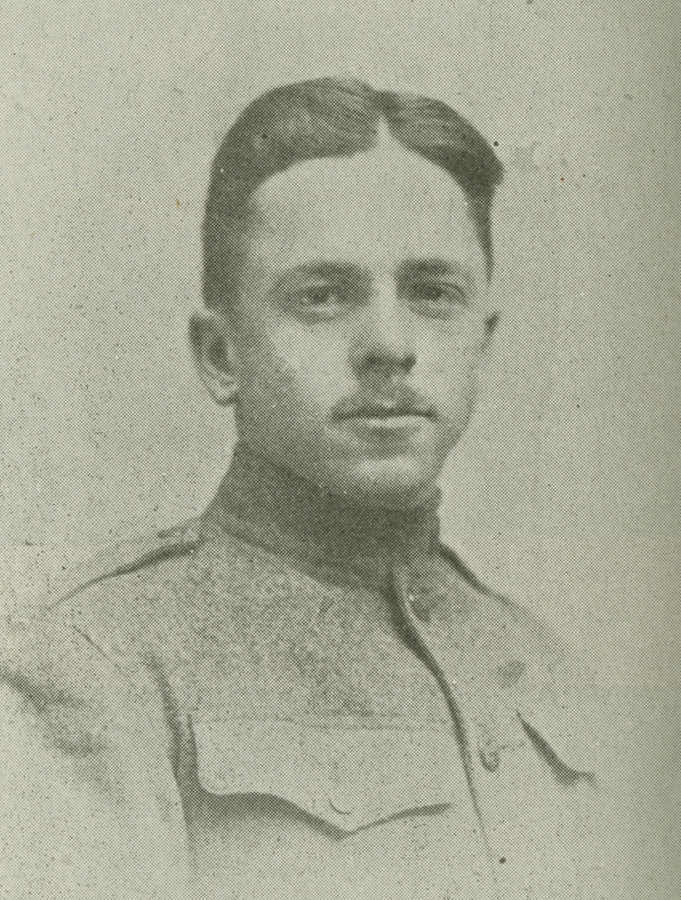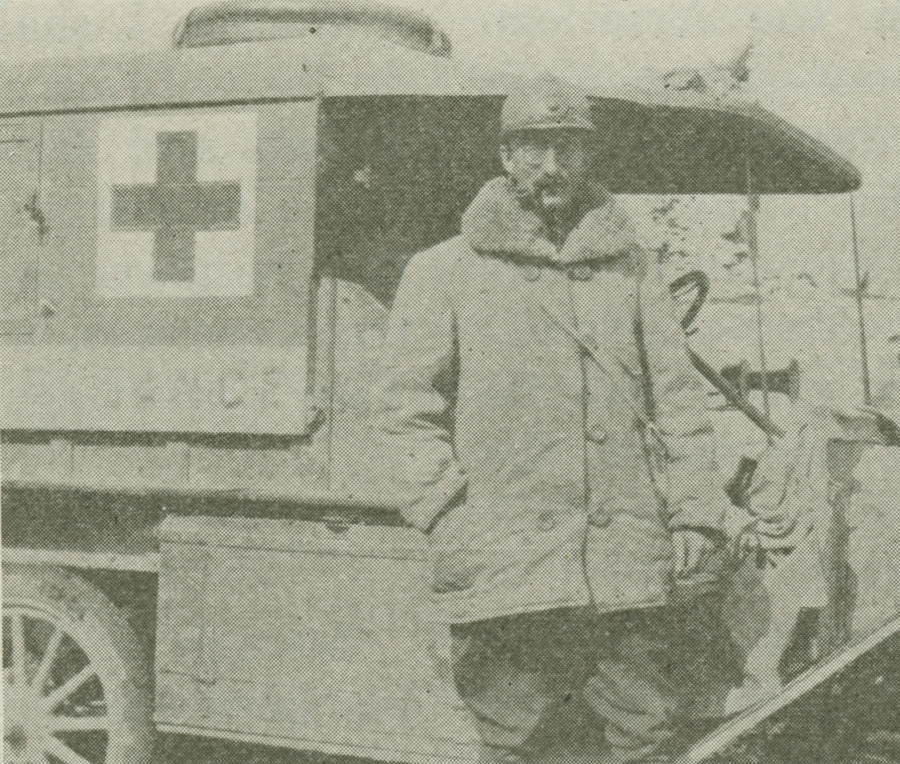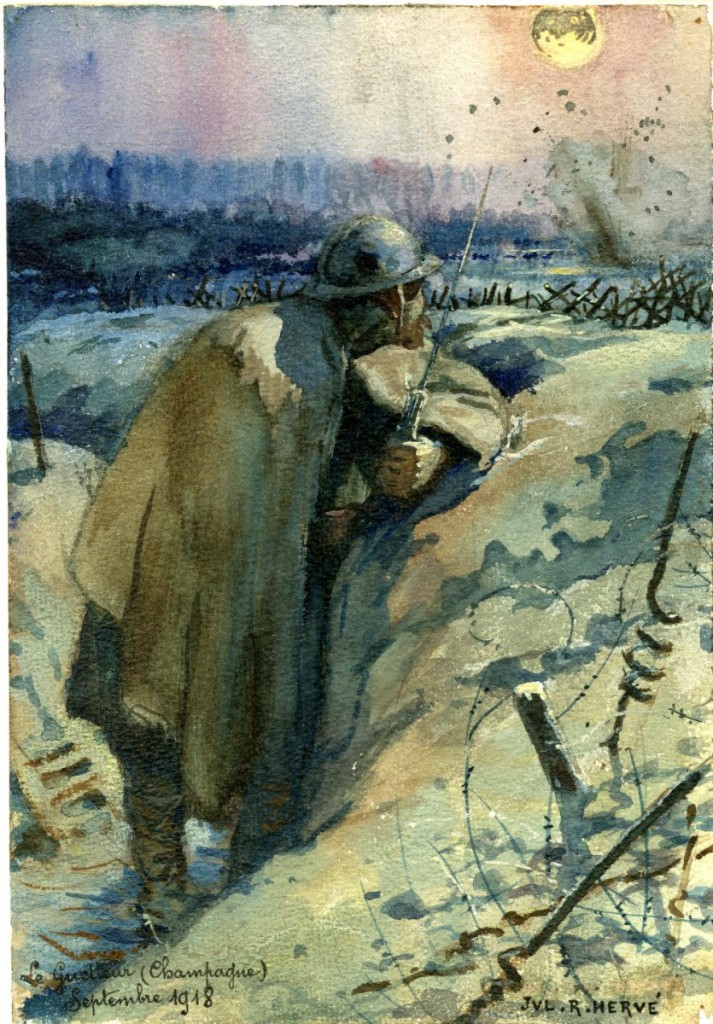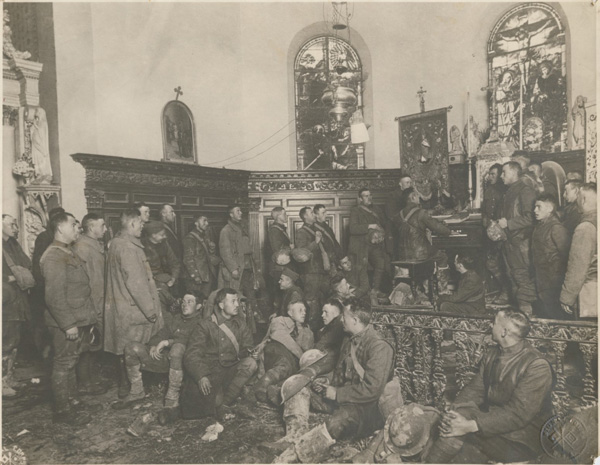“THE AFTER EFFECTS OF THESE POISONOUS GASES ARE NOT ALWAYS AGREEABLE.” –Professor Charles Hunkins, 1918[1. BUA. BAM, 18:6. January, 1918. pg117]
The campaign organized by the Brown Christian Association that sent three Brown ambulances to France sparked an interest on campus in ambulance work with the American Field Service. Professor Charles Hunkins and about ten other men from Brown volunteered for ambulance work with the service at their own expense. Later in the year, when a call went out for thirty-six Brown men wanted by the Intercollegiate Intelligence Bureau for ambulance work in France, sixty applications were made just a few days later. Selections were made for the coveted slots in one of the first organized national units of the Medical Enlisted Reserve Corps. and on commencement day of 1917, the unit left Providence for training at Allentown in preparation for service in Italy.[2. The Brown Ambulance Unit was the first to arrive in Italy. They transferred to France from Genoa, driving their own machines. BUA. BDH, October 5, 1918] President Faunce wrote to the men of the unit of the pride that the University and he himself felt for them. “There is no nobler kind of work than that into which you men are going. Conditions in France are pitiful beyond words to express, and they will be worse when you arrive. You men with strong health, with courage, with patriotic devotion, with valuable experience will go over there to rescue hundreds or thousands from suffering and death, and you will have the joy of feeling that your lives are counted for the good of the world as they never counted before. I envy you all. I wish I was going too.”[3. Ibid]
Hugh Wilson McNair “Mac” (1917) was one of the students that left Brown that May to become an ambulance driver in France. On October 5th, 1918, after a lengthy period of dangerous and almost continuous service, MacNair was at an advance post when it came under heavy bombardment. “The drivers were ordered to put their cars away and go to shelter. MacNair had just backed his car into a shed and was getting out when a shell landed nine feet from him.” His leg was shattered so completely, it had to be amputated six inches from his body. When the chief Lieutenant visited him in hospital the next morning, MacNair greeted with “his old time smile saying, Lieutenant I think they sort of fooled me last night, for when I came out of the ether this morning I found myself minus a right leg.”[4. BUA. BAM. 19:7. February, 1919. pp136-137] Frederic Lathrop reported to President Faunce that Mac’s “devotion to duty, his contempt of danger, his scorn of all manner of affectation gained the respect and admiration of all his comrades.”
Driver H.A. Bachelor (1917) wrote of the prevalent condition of Trench Feet. “Trench feet, I have discovered, are caused by standing for long periods in cold water; the dampness causes one’s feet to swell, blood circulation stops, a numbness sets in that ends in a few days with local decomposition. Amputation is the only cure for it, I think, and the suffering must be as bad as it is when one’s feet are frozen. [ ]…They stand in mud and water for hours on end just watching that no Boche comes across the river.”[5. BUA. BAM 17:8, March, 1917. p199]
Professor Charles Hunkins, with the French Armies at Front, wrote to President Faunce on September 28th, 1917, explaining that “our Section is an old one, operating in and around the most famous battlefields of Europe. [ ]…we have been through the greatest French offensive of the Summer. [ ]…I have had one man killed and three wounded, and while my car has been shot up three times, I have had the good fortune thus far to escape unscathed.” In letter to Faunce, dated February 2, 1918, Hunkins reported on the “pretty cruel affair” of the bombing of Paris and stated that “This year thus far has been the most significant one in my life and very rich in human experience, but I shall be very glad to be back next year in peaceful Providence and to resume my work.” After Hunkins completed his term of service at the front, he wrote ”My work with the Ambulance Service has ended, and I have returned to Paris safe and sound, with the exception of a slight irritation in throat and bronchial tubes caused by going through three gas attacks. This will soon pass away; but the after effects of these poisonous gases are not always agreeable.”
After the Armistice, in a letter filled with harrowing details, David Hall Connally (1901) wrote to President Faunce. “We have had a rather strenuous time since coming to Italy. [ ]…Our work was taxed to the limit, practically all sections working for three nights and days without sleep. Many of them have been profusely decorated with the Italian war cross. [ ]…As soon as the front gates of the enemy were broken the Italian prisoners came pouring thru and for one month these poor fellows, almost starved to death, bare footed and in rags came trodding along thru the cold towards home. All methods of supply, broke down in the face of such overwhelming numbers of men. Hundreds of these poor fellows in their eagerness to get home perished along the wayside. [ ]…The condition of the few natives that remained was pitiable and their joy at being rescued was beyond description. Dogs and cats were not seen they having been consumed for food. The country is destitute.”
On February 23rd, 1919, fifteen members of the Brown Ambulance unit received the Croce al Merito di Guerra from Colonel Galvani for brave and faithful service.[6. BUA. WWI Correspondence. Ambulance Service report]
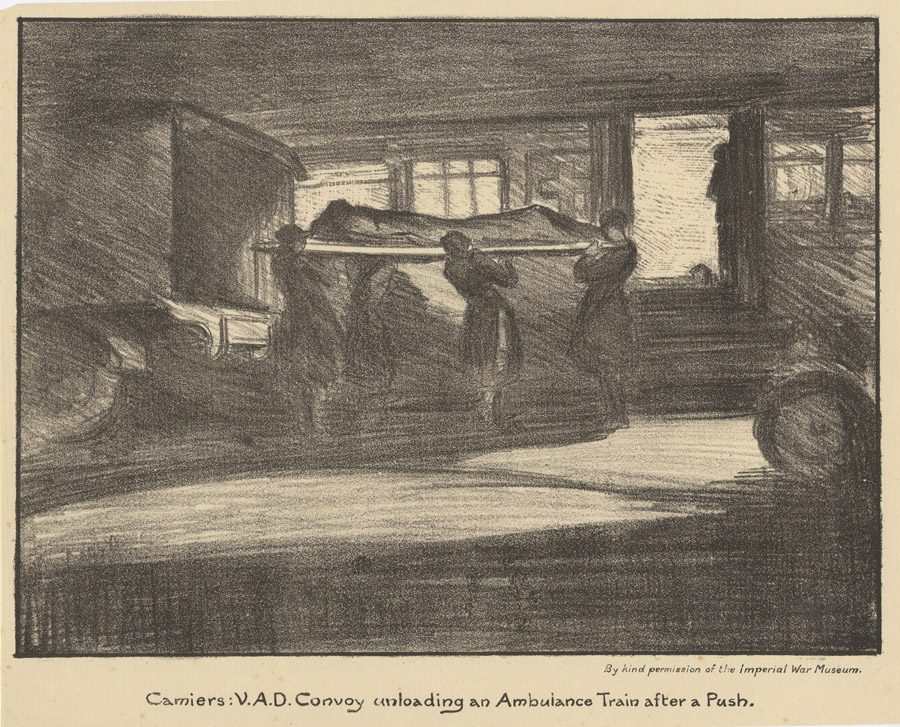
Carriers: V.A.D. Convoy unloading an Ambulance Train after a Push. Anne S. K. Brown Military Collection.
Related Materials in the BDR
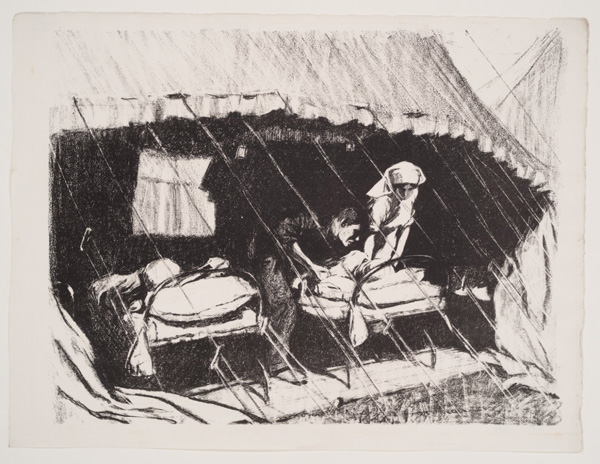
A casualty clearing station. 1918. Prints, Drawings and Watercolors from the Anne S. K. Brown Military Collection.

